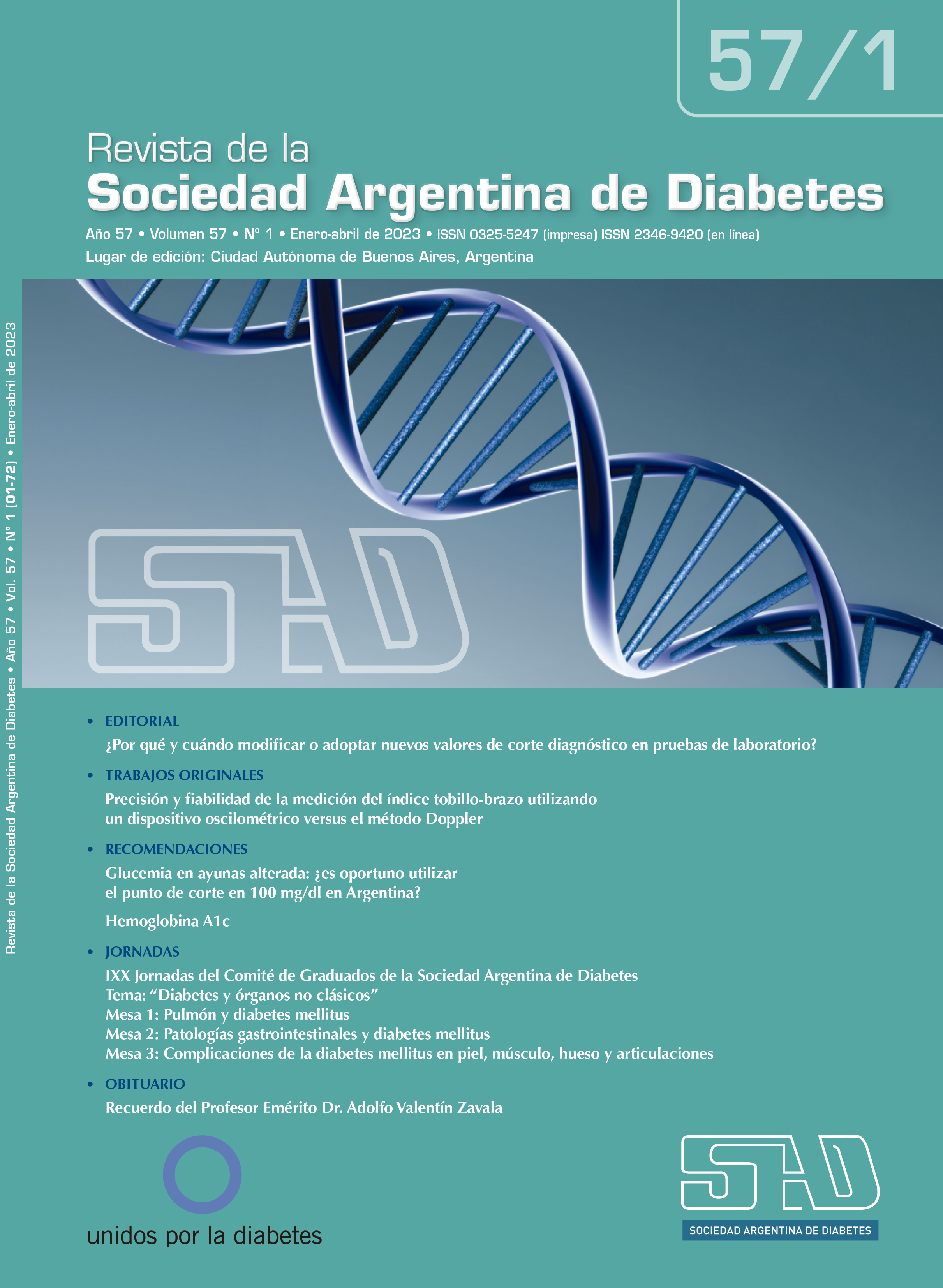Why and when to modify or adopt new diagnostic cut-off values in laboratory tests?
DOI:
https://doi.org/10.47196/diab.v57i1.675Keywords:
diabetes mellitus, lab testsAbstract
Diagnostic cut-off values for laboratory tests have generally been established based on a reference range obtained from a "healthy" population. However, there may be circumstances in which it is required to modify these cut-off values for specific pathologies. This is the case of diabetes mellitus (DM), where the risk of its development is a continuum that can start from blood glucose levels considered “normal”. While the interpretation of a test with binary results is straightforward, the interpretation of a test with continuous results is not so simple. It is difficult to establish a gold standard for the diagnosis of conditions such as, for example, arterial hypertension and hypercholesterolemia, which have constantly changed based on the concrete evidence of the benefit of reducing their values to a greater or lesser extent depending on the patient's condition. It has been even more difficult to establish a gold standard for the diagnosis of DM.
References
I. Commendatore V, Faingold C, Fenili C, Frechtel G, et al. Glucemia en ayunas alterada ¿es oportuno utilizar el punto de corte en 100 mg/dl en Argentina? Rev Arg Soc Diab 2023;57(1):9-19.
II. Tabák AG, Herder C, Rathmann W, et al. Prediabetes: a high-risk state for diabetes development. Lancet 2012;379:2279-90.
III. American Diabetes Association. Diagnosis and classification of diabetes mellitus. Diabetes Care 2010;33 Suppl 1:S62-9.
IV. Kirthi V, Nderitu P, Alam U, et al. The prevalence of retinopathy in prediabetes: a systematic review. Surv Ophthalmol 2022;67:1332-1345.
V. ElSayed NA, Aleppo G, Aroda VR, et al. Classification and diagnosis of diabetes: Standards of Care in Diabetes 2023. Diabetes Care 2023;46(Suppl.1):S19-S40.
VI. Branda JI, de Almeida-Pititto B, Ferreira SR. Prevalence of diabetic kidney disease in prediabetes. Obesity Medicine 2019;15:100105.
VII. Eleftheriadou A, Williams S, Nevitt S, et al. The prevalence of cardiac autonomic neuropathy in prediabetes: a systematic review. Diabetologia 2021;64:288-303.
VIII. Kirthi V, Perumbalath A, Brown E, et al. Prevalence of peripheral neuropathy in prediabetes: a systematic review. BMJ Open Diab Res Care 2021;9:e002040. doi:10.1136/bmjdrc-2020-002040.
IX. Maselli MC, Llanos I, Lucarelli C, Fenili C, Ruibal G, Valdez S. Hemoglobina A1c. Rev Arg Soc Diab 2023;57(1):20-23.
Published
Issue
Section
License
Copyright (c) 2023 on behalf of the authors. Reproduction rights: Argentine Diabetes Society

This work is licensed under a Creative Commons Attribution-NonCommercial-NoDerivatives 4.0 International License.
Dirección Nacional de Derecho de Autor, Exp. N° 5.333.129. Instituto Nacional de la Propiedad Industrial, Marca «Revista de la Sociedad Argentina de Diabetes - Asociación Civil» N° de concesión 2.605.405 y N° de disposición 1.404/13.
La Revista de la SAD está licenciada bajo Licencia Creative Commons Atribución – No Comercial – Sin Obra Derivada 4.0 Internacional.
Por otra parte, la Revista SAD permite que los autores mantengan los derechos de autor sin restricciones.




























